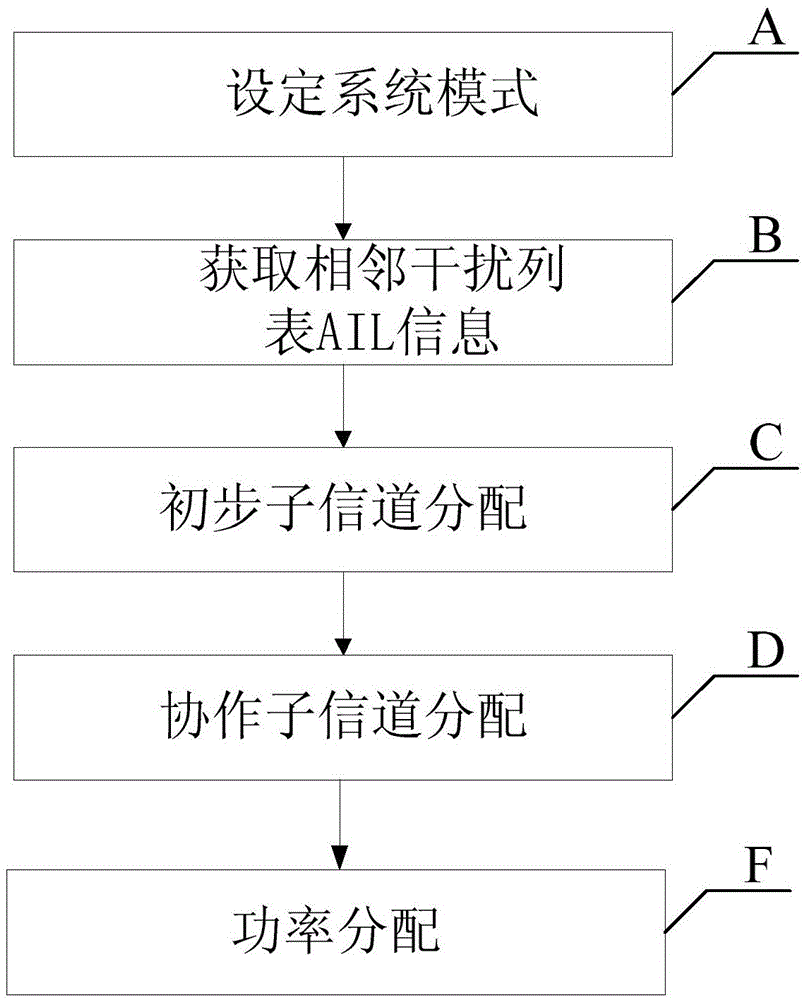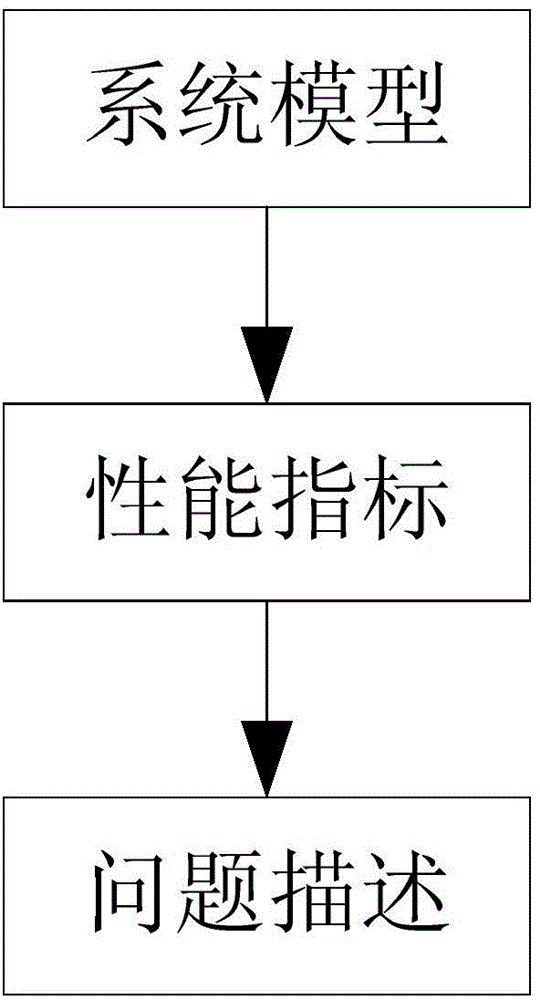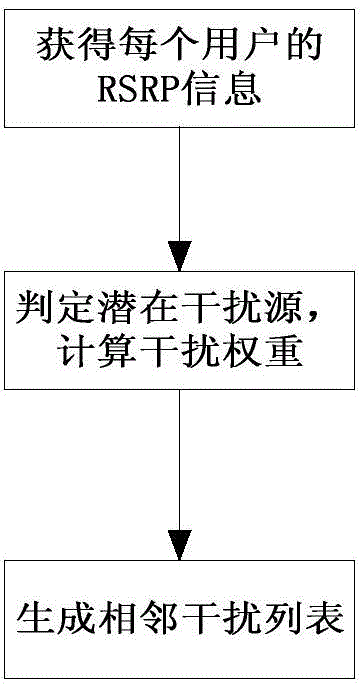Distributed energy-saving resource distribution method of heterogeneous network
A resource allocation and heterogeneous network technology, applied in the direction of reducing energy consumption, advanced technology, electrical components, etc., can solve the problems of home base station same-layer interference, macro base station and small home base station cross-layer interference, waste of power, etc.
- Summary
- Abstract
- Description
- Claims
- Application Information
AI Technical Summary
Problems solved by technology
Method used
Image
Examples
Embodiment Construction
[0035] The preferred embodiments of the present invention will be described in detail below with reference to the accompanying drawings.
[0036] figure 1 As the overall flowchart of this method, it can be seen from the figure that this method can be divided into 4 major steps, namely:
[0037] Step A, set the system mode.
[0038] Step B, obtaining the neighbor interference list AIL information of each home base station in the cell.
[0039] Step C, according to the proposed method, each home base station performs preliminary sub-channel allocation.
[0040] In step D, the cooperative sub-channel allocation is performed again among the home base stations.
[0041] Step F, perform power allocation according to the spectrum allocation result.
[0042] The specific process of each step is described in detail below.
[0043] Step A - Set the system mode.
[0044] see figure 2 , figure 2 The flowchart set for the system model may specifically include the following parts: ...
PUM
 Login to View More
Login to View More Abstract
Description
Claims
Application Information
 Login to View More
Login to View More - R&D
- Intellectual Property
- Life Sciences
- Materials
- Tech Scout
- Unparalleled Data Quality
- Higher Quality Content
- 60% Fewer Hallucinations
Browse by: Latest US Patents, China's latest patents, Technical Efficacy Thesaurus, Application Domain, Technology Topic, Popular Technical Reports.
© 2025 PatSnap. All rights reserved.Legal|Privacy policy|Modern Slavery Act Transparency Statement|Sitemap|About US| Contact US: help@patsnap.com



